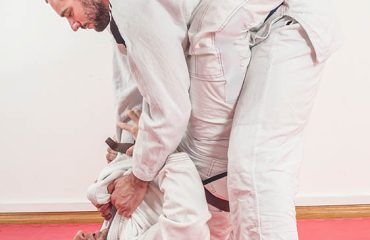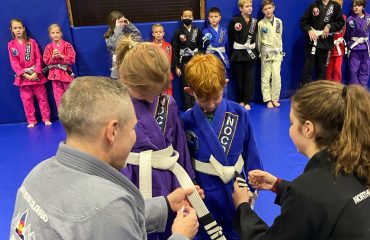
BJJ, often known as Brazilian Jiu-Jitsu, is a well-liked martial art. It’s a fantastic way to learn self-defense techniques and keep in shape. It might be intimidating and confusing for individuals who are just getting started. To give you a solid foundation before progressing to more advanced techniques, this blog article will provide an introduction to the fundamentals of BJJ for white belts. Jiu jitsu white belt moves are extremely important for building a strong foundation in the art. As you progress, you’ll learn to execute techniques in a calm and controlled manner, which is essential for success in BJJ.
The Guard Pass

In Brazilian Jiu-Jitsu, one of the primary techniques is the guard pass, which involves moving past your opponent’s guard to gain a superior position. To execute this technique, you must first sit up and break your opponent’s grip, creating space between yourself and your opponent by using your hips or arms to push their legs away. Next, side-step and stand up while keeping one foot between their legs to pass their guard. Finally, use your leverage and body weight to get into the proper position to take control of the match. Learning to create space and manipulate your opponent’s balance is crucial for successful guard passes. As you advance to blue belt, you’ll refine these techniques and learn more advanced variations.
The Triangle Choke

Another essential move in BJJ is the triangle choke. This move involves using one arm (usually your right arm) to secure a triangle around your opponent’s neck while using both legs to keep them locked into position. It is important to get into a good starting position before attempting this move – start by having one knee on the ground and maintaining a strong base with your other leg and both hands on either side of your opponent’s head or chest area. From there, use one arm and both legs to create a triangle around their neck while keeping them close enough that they cannot escape but far enough away that they cannot counterattack or strike back at you. Once secured, squeeze tightly until they tap out or go unconscious! The triangle choke is a powerful submission that can be executed from various guard positions, including full guard. As you progress to purple belt, you’ll learn to set up this technique from different positions and combine it with other attacks.
The Armbar Submission

Finally, every list of essential BJJ moves would only be complete by mentioning the armbar submission. This move involves securing a tight grip around an opponent’s arm with both hands and then applying pressure to break it or force it into submission. To do this effectively, start by gripping near their elbow with one hand and then wrapping it around their wrist with the other hand so that when you apply pressure, it translates into pain in their shoulder joint instead of just in their muscles or bones. Then use leverage by driving forward with both hands while pushing down on their shoulder joint until they submit or tap out – whichever comes first! The armbar can be executed from various positions, including the mount position and side control. Proper weight distribution is key to maintaining control during this submission attempt.
The Names of Different Ground and Submission Techniques in BJJ

- Guard Positions: A fundamental aspect of BJJ is the guard position, where the fighter lies on their back and entwine their legs around their opponent. There are three primary types of guard positions: closed guard, open guard, and half guard. Closed guard involves securing the opponent by wrapping the legs around them. Open guard refers to when the legs are not locked around the opponent, and half guard occurs when one leg is wrapped around the opponent’s thigh. These variations provide strategic options for controlling and neutralizing the opponent’s movements in BJJ. Developing strong guard player skills is essential for bjj white belts and will serve you well throughout your journey to black belt.
- Chokes: Chokes are integral techniques in BJJ that aim to restrict the opponent’s blood flow to the brain, leading to unconsciousness. BJJ encompasses several types of chokes, such as the rear-naked choke, guillotine choke, triangle choke, and more. The rear-naked choke involves the fighter encircling their arm around the opponent’s neck from the back and applying pressure. The guillotine choke entails the fighter wrapping their arm around the opponent’s neck from the front and applying pressure. Finally, the triangle choke is executed by the fighter using their legs to enclose the opponent’s neck and one arm. These choke variations provide effective methods for achieving control and submission in BJJ. The cross collar choke is another powerful technique that utilizes the opponent’s gi to apply pressure to the carotid arteries.
- Joint Locks: Joint locks are techniques that aim to hyperextend or break an opponent’s joint. There are various types of joint locks, including armbar, kimura, and ankle lock. An armbar involves the fighter holding their opponent’s arm and bending it in the opposite direction of the elbow, thus hyperextending it. Kimura is when the fighter holds their opponent’s wrist and applies pressure to their shoulder, causing it to dislocate. Ankle lock involves the fighter twisting their opponent’s foot and ankle, causing them to break. As you advance in BJJ, you’ll learn more advanced joint locks like heel hooks, but these are typically reserved for higher belt levels.
- Sweeps: Sweeps play a crucial role in BJJ as they allow the practitioner to reverse the opponent’s position and establish dominance. BJJ encompasses diverse sweep techniques, such as the scissor sweep, arm inside sweep, and butterfly sweep. The scissor sweep involves using the legs to sweep the opponent’s legs out from under them. With the arm inside sweep, the fighter employs their legs to sweep the opponent’s legs in one direction while simultaneously pushing them in the opposite direction. Lastly, the butterfly sweep entails lifting the opponent off the ground using the legs and rolling them onto their back. These sweep variations provide effective means of gaining control and advantageous positions in BJJ. Developing good positional awareness is key to executing successful sweeps and transitioning to dominant positions.
- Takedowns: Takedowns are fundamental techniques in BJJ employed to bring the opponent to the ground. BJJ encompasses a range of takedown variations, including the double-leg takedown, single-leg takedown, and hip throw. The double-leg takedown involves the fighter swiftly shooting in and securing both of the opponent’s legs, lifting them off the ground, and executing the takedown. Similarly, the single-leg takedown involves shooting in and grabbing one of the opponent’s legs, lifting it off the ground to bring it down. As for the hip throw, it entails utilizing the hips to skillfully toss the opponent over the shoulder, resulting in a takedown onto the ground. These takedown techniques are essential components of BJJ, allowing practitioners to dictate the course of the fight by gaining control from the standing position. Regular practice of takedowns through positional sparring helps develop muscle memory and improves overall performance.
Brazilian Jiu-Jitsu is a dynamic and highly effective martial art that offers practitioners a wide array of techniques for self-defense, competition, and personal growth. As a white belt, it is essential to focus on mastering the fundamental moves, such as the guard pass, triangle choke, and armbar submission. These techniques form the foundation upon which more advanced skills can be built. Most beginners find that focusing on basic positions and transitions helps them become a better fighter more quickly.
Furthermore, understanding the terminology and variations of ground and submission techniques is crucial for communicating effectively with training partners and instructors. By familiarizing oneself with the different guard positions, chokes, joint locks, sweeps, and takedowns, a white belt can develop a well-rounded skill set and be better prepared for the challenges that lie ahead. Learning to escape from bad positions like bottom side control or mount is also crucial for beginner level practitioners.

If you are interested in learning Brazilian Jiu-Jitsu, now is the perfect time to start! Find a reputable BJJ school in your area and schedule a trial class. Contact Noco Jiu-Jitsu and Self-Defense, experience the benefits of this incredible martial art firsthand, and discover how it can transform your life. Remember, every adventure begins with a single step, so take that first step today and embark on your BJJ path. With dedication, perseverance, and a willingness to learn, you can unlock your full potential and achieve greatness both on and off the mats. Don’t wait any longer – start your Brazilian Jiu-Jitsu adventure now! You can also consider taking a private lesson to jumpstart your training and focus on specific areas of improvement. Many people find that BJJ helps them lose weight and get in better shape while learning valuable self-defense skills that set it apart from other martial arts.
Frequently Asked Questions:
Q: Why is the guard pass important in BJJ?
A: The guard pass is a primary technique that allows you to move past your opponent's guard and gain a superior position.
Q: How does the triangle choke work?
A: The triangle choke involves using one arm and both legs to create a triangle around the opponent's neck, applying pressure until they tap out or lose consciousness.
Q: What are the three primary types of guard positions in BJJ?
A: The three main guard positions are closed guard, open guard, and half guard.
Q: What are some common chokes used in Brazilian Jiu-Jitsu?
A: The article mentions several chokes, including the rear-naked choke, guillotine choke, triangle choke, and cross collar choke.
Q: What are sweeps in BJJ, and why are they important?
A: Sweeps are techniques that allow a practitioner to reverse their opponent's position and establish dominance. They are crucial for gaining control and advantageous positions.
Q: What are some takedown techniques used in Brazilian Jiu-Jitsu?
A: The article mentions double-leg takedown, single-leg takedown, and hip throw as common takedown techniques in BJJ.
Q: How can beginners improve their BJJ skills?
A: The article suggests focusing on basic positions and transitions, developing strong guard player skills, and practicing positional sparring to improve overall performance.
Q: Are private lessons beneficial for BJJ beginners?
A: Yes, the article recommends considering private lessons to jumpstart training and focus on specific areas of improvement.
Q: What are some benefits of practicing Brazilian Jiu-Jitsu?
A: BJJ offers self-defense techniques, helps practitioners keep in shape, lose weight, and provides valuable skills that set it apart from other martial arts.




